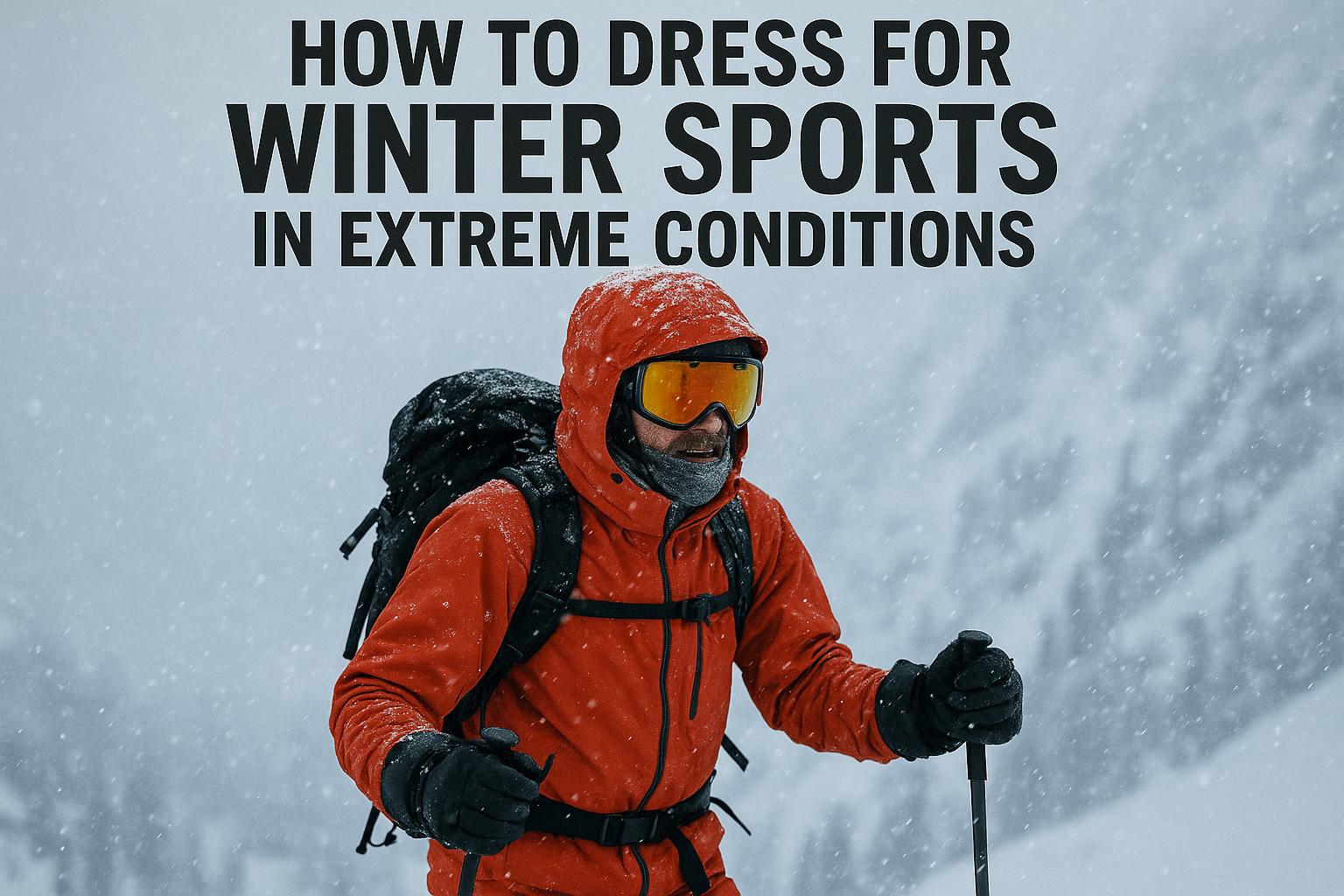Understanding Layering
Layering is an essential technique when preparing for winter sports, especially in extreme conditions. This method is all about strategically using multiple layers of clothing to achieve a balance between warmth, moisture control, and protection from the elements. The effectiveness of layering lies in its adaptability, allowing you to adjust the layers according to your activity level and weather conditions.
The three fundamental layers that make up the heart of this approach are the base layer, the insulating layer, and the outer shell.
Base Layer
The base layer serves as the foundation of the layering system. Positioned closest to your skin, this layer’s primary purpose is moisture management. Proper moisture-wicking is crucial because it keeps you dry by carrying sweat away from your body. This is vital in cold conditions, as moisture can rapidly lead to a loss of heat through the process of evaporation.
Materials such as merino wool or synthetic fabrics like polyester are preferred for this layer. Merino wool is not only effective at wicking moisture but also provides natural antimicrobial properties, reducing odor. On the other hand, synthetic materials are known for their quick-drying capabilities and durability. Both options offer lightweight comfort, ensuring that mobility is not compromised during your sports activities.
Insulating Layer
The insulating layer sits atop the base layer and functions to retain body heat. This layer acts as a thermal barrier, trapping warmth and keeping you cozy. Typical materials used in this layer include fleece and down.
Fleece is praised for its breathability and water resistance, making it suitable for conditions where activity level may lead to perspiration. It allows some moisture to escape while keeping warmth in. However, down is unmatched in its insulation-to-weight ratio, offering substantial warmth in a lightweight package. Its main drawback is that it tends to lose efficiency when exposed to moisture, so it is advisable to use it where precipitation is minimal or for less physically exerting activities.
The choice between fleece and down should be made based on your specific activity levels and potential weather encounters. For instance, vigorous activities may benefit from the breathability of fleece, while colder, static conditions could call for the superior warmth of down.
Outer Shell
The outer shell is essentially your protective barrier against external elements such as wind, rain, and snow, making it a vital component of the layering strategy. This layer must be both waterproof and windproof to effectively guard you against inclement weather.
Materials like Gore-Tex are highly recommended for the outer shell due to their innovative technology that combines breathability with superior protection against moisture. A breathable shell ensures that trapped sweat which has passed through the inner layers doesn’t get trapped inside, thus preventing condensation buildup within the clothing system.
It’s also beneficial to consider outer shells equipped with features like vents, which can be strategically used to regulate body temperature during varying levels of activity intensity.
Choosing Accessories
In addition to the clothing layers, accessories help achieve complete protection and comfort. They ensure that every part of the body is adequately covered and shielded from extreme weather conditions.
Gloves and Mittens
Keeping hands warm is of utmost importance to prevent frostbite, a real risk in extreme cold. Both gloves and mittens are available in insulated and waterproof designs. The choice between gloves or mittens depends mainly on the required dexterity. While mittens tend to provide more warmth because they allow fingers to generate and maintain heat more effectively, gloves facilitate a better range of motion and flexibility, ideal for sports requiring intricate hand movements.
Headwear
The head is a significant point of heat loss, necessitating optimal coverage to preserve body warmth. Selecting a good hat made of wool or fleece material ensures effective heat retention. In particularly extreme conditions, a balaclava can provide additional protection for the face, neck, and head, shielding these areas from wind and cold.
Footwear
Your choice of footwear should focus on being both insulated and waterproof to keep feet warm and dry. Providing an adequate grip is another critical factor, especially for sports involving snowy or icy terrains. Wool or synthetic socks are ideal to accompany these boots, as they offer great moisture-wicking abilities while retaining heat, thus keeping feet comfortable over extended periods.
Other Considerations
Beyond just clothing and accessories, there are various other factors and gear to consider depending on the type of winter sport and environmental conditions you are likely to encounter.
Eye Protection
The reflective quality of snow can intensify sunlight, increasing the risk of glare and potential UV damage to the eyes. It’s highly advisable to use UV-protective glasses or goggles to avoid these risks. Ensuring good sightlines under a bright reflective environment is essential for both safety and performance.
Importance of Hydration and Nutrition
Despite colder conditions, the body loses fluids rapidly, making hydration an essential aspect of preparation. Dehydration can lead to fatigue and decreased performance, so maintaining fluid intake is critical. Carrying water and high-energy snacks ensures that energy levels remain optimum, providing the necessary fuel for effective participation in winter sports activities.
When preparing for winter sports, consider each element of layering and accessories thoughtfully for a safer and more enjoyable experience. For further information on how to select the best winter sports gear, you can visit reliable outdoor clothing resources. Remember, the right combination of clothing and accessories plays a central role in staying safe and enhancing enjoyment during extreme winter sports conditions.
